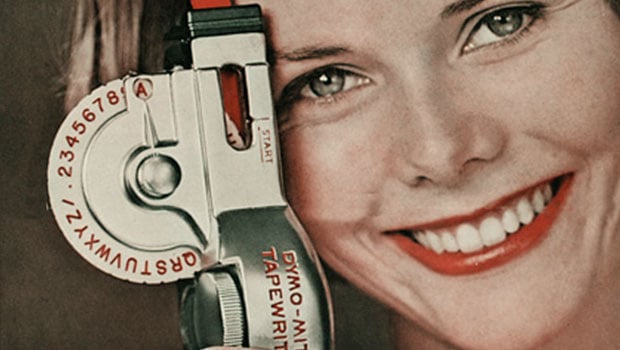Scanning Around With Gene: Dymo-Mite! The Art of Labeling

I’m on a new (and what I hope will be final) kick in a lifetime of efforts to be more organized and a better time manager. Thanks to a fortuitous hotel-room assignment during an event last year, I found myself rooming with the late productivity blogger Marc Orchant. Aside from being a terrific guy, Marc was a disciple of the Getting Things Done (GTD) method of productivity proposed by David Allen in his book of the same name. At the center of GTD is a well-organized and simple filing system. Sadly, Marc died unexpectedly before we could become better friends and I could thank him for his inspiration.
There are many aspects to the GTD way, but two particulars sold me. David Allen believes that if something is worth filing, it’s worth filing well, so he advises GTD practitioners to first purchase a high-quality filing cabinet. And second, every file folder should be labeled with a typeset label produced by a small electronic label makers.
For an obsessive labeler like myself, the choice of label maker was difficult. I settled on a model from Brother, due in part to its ability to set symbols and accented characters (used for the folder labeled “résumé”). I was glad to see, however, that another popular labeler brand is the venerable Dymo.
Figure 1. From 1958 to the late 1980s, Dymo colored plastic tape was the preferred method of marking everything and anything. Other companies made similar products, but Dymo held the largest market share by far and vigorously defended its patents.

Founded in Hayward, California, in 1958, Dymo didn’t invent the hand-held embossing label maker, but they did make it a success. The first models used soft metal tape and were designed for industrial marking.
Figure 2. The first hand-held label makers were sold by the Roovers-Lotsch Corporation as the “MidgieMatic,” and targeted to, among others, gardeners for labeling plants.

But Dymo saw great potential for a hand-held labeling device that was simple to operate and cheap enough for use in every sort of business. With the addition of colored plastic and an adhesive back, the company soon had a big hit on its hands. All over the world people began obsessively labeling things, punching out letters one at a time by spinning a font wheel to line up the next character.
Figure 3.In addition to great tape colors, Dymo came up with some great product names, including the “Dymo-Mite Tapewriter.”

The selection of type styles was pretty limited, and the embossed white letters somewhat crude, but there was no mistaking what the label said. And they were extremely durable. Anyone who ever tried to remove an early Dymo label knows that the adhesive was industrial strength. Over time the color selection became greater and models appeared for the home, schools, and even the “executive” (sold in a fine leather travel case).
Figure 4.Have labeler, will travel.

From my roaming around garage sales and thrift shops, I’d say that almost every home in America must have had a Dymo label maker at one time, along with four or five half-used rolls of colored tape. I can certainly remember burning through several rolls of tape as a kid, identifying everything in my room (door, desk, closet, window, etc.) just in case I had a sudden attack of amnesia. It was surprisingly difficult to set good type on a Dymo tapewriter: It was easy to get the letters slightly off the baseline, and the “weight” was purely dependent on your ability to squeeze the trigger consistently from one character to the next.
Figure 5. Squeezing the tapewriter just the right amount to get a sharp but not blurry letter was no easy task. I suspect at some point someone held a record for how fast they could type on a Dymo machine, but in my experience the best results were achieved by a slow and deliberate process.

Dymo tapewriters are still sold, and you can still get blank plastic tape. (Of course, the versions with expensive paper tape and digital printing are more common in office supply stores.) For the early all-metal units, try eBay. Dymo, the company, has passed through several hands and has only existed as a brand in recent times, not as an innovator.
Figure 6. Every industry got in the act of embossed labels. Only these days achieving the Dymo look “in the Photo shop” requires buying a digital font designed in the Dymo style.

But you can still see the impact of the Dymo tapewriter on file-cabinet drawers, hospital charts, keychains, locker doors, and apartment mailboxes from Seattle to St. Augustine. For many of us it was our first introduction, however crude, to the art of typesetting. And more importantly for me, to the art of typos. To this day, at my mother’s house, there is a small red plastic label on a certain bedroom fixture that reads “LITESWICH.”
This article was last modified on May 18, 2023
This article was first published on March 6, 2008



